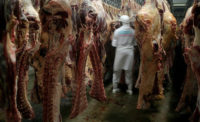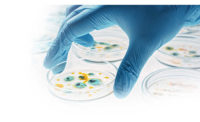USDA-FSIS to chart new path on Salmonella control in poultry

On Oct. 19, the U.S. Department of Agriculture’s Food Safety and Inspection Service (FSIS) announced it will undertake a new approach to regulating Salmonella in poultry.
In the coming months, FSIS will begin a series of roundtables to gather information and recommendations on how to approach meet the federal government’s Healthy People 2030 goal of achieving a 25% reduction in Salmonella illnesses. Based on initial discussions, we anticipate FSIS will look to the poultry industry to, among other things, implement preharvest controls and change sampling procedures.
FSIS currently uses performance standards to measure the effectiveness of Salmonella controls for chicken and turkey. Performance standards classify poultry establishments based on the number of FSIS samples of chicken and turkey that test positive for Salmonella over a 52-week moving window. Under the performance standards approach, FSIS is measuring for the prevalence of Salmonella and does not distinguish between strains of Salmonella – some of which are more virulent than others – nor do performance standards measure the quantity of Salmonella present in a poultry sample (e.g., enumeration).
USDA Secretary Tom Vilsack has noted that the prevalence of Salmonella in FSIS poultry samples has decreased significantly, the level of human infections with Salmonella illnesses has remained high, with more than 1 million illnesses annually. The U.S. Centers for Disease Control and Prevention (CDC) attributes approximately 23% of these illnesses to the consumption of chicken and turkey. Secretary Vilsack has noted that FSIS has received two petitions requesting the agency take new action on Salmonella in poultry.
Vilsack and Deputy Under Secretary for Food Safety Sandra Eskin indicated that FSIS’ approach will involve numerous pilot projects to generate data and provide answers on approaches that are effective at reducing Salmonella illnesses. FSIS intends to host numerous roundtables with stakeholders representing industry, consumer groups, and university researchers to collaborate on the design of the various pilot programs. FSIS will also work with the National Advisory Committee on Microbiological Criteria for Foods (NACMCF) to help shape the agency’s approach to controlling Salmonella illness.
This announcement is not FSIS’ first signal that it wants a new approach on Salmonella control. In August, FSIS announced that the agency’s 2022-27 Strategic Plan will likely include goals of reducing the prevalence of specific serotypes of Salmonella in poultry that are associated with human illness. This move sent a signal that FSIS is exploring an approach to targeting specific strains of Salmonella as opposed to a blanket approach to the pathogen.
Based on our involvement in this area, we anticipate FSIS will consider some of the following actions in its approach to controlling Salmonella illness:
- Preharvest controls: One of the primary areas where FSIS believes it can make large gains on Salmonella control is the implementation of preharvest controls, such as vaccines or probiotics. We anticipate the agency will target some pilot programs on steps that can be taken before birds reach a slaughterhouse. But FSIS does not have legal jurisdiction upstream of the slaughterhouse.
- Enumeration: Given the advances in laboratory methods, we anticipate FSIS may explore whether its efforts should focus on the quantity of bacteria and its impact on the likelihood of illness.
Looking for a reprint of this article?
From high-res PDFs to custom plaques, order your copy today!








